April 28, 2025
Ok, guys, hang on tight, this is complicated. We had the HVAC system upgraded from 4 to 5 tons (HVAC upgrade) and it did help, but it had a very difficult to solve problem. We knew that the existing ducts were a little undersized for the new air handler and evaporator coils, so we opened up the return air ducts, but that didn’t quite solve the problem of the evaporator freezing up.
Martin took a long time to figure out how to completely fix that problem. The first step was getting better data. The Control by Web X-410 that’s controling the make up air system can handle up to 16 one-wire sensors, so we added a temperature and humidity sensor (https://controlbyweb.com/accessories/temperature-humidity-sensor/) immediately down stream of the evaporator coil. After collecting a lot of data we figured out that when that sensor was reading 39°F, the coil was starting to ice up. So one small bit of logic in the X-410 and it could tell the HVAC controller to shut down.
The problem was, the Control by Web X-300 thermostat, which is/was what actually controls the HVAC compressor, had to be replaced, because when it is in thermostat mode, it can’t communicate with anybody and the lower mechanical room couldn’t tell it to shut down. So, we replaced it with another X-410 (https://controlbyweb.com/x410/). Control by Web has made it amazingly easy for their modern devices to talk to each other. You just create a register in one and tell the remote to change it. Voilà! Now the freeze up detection logic can be entirely the responsibility of the lower mechanical room X-410 and the upper thermostat X-410 just has to monitor one more thing besides temperature to turn the HVAC on and off.
Well, lets see how all this in done in detail!
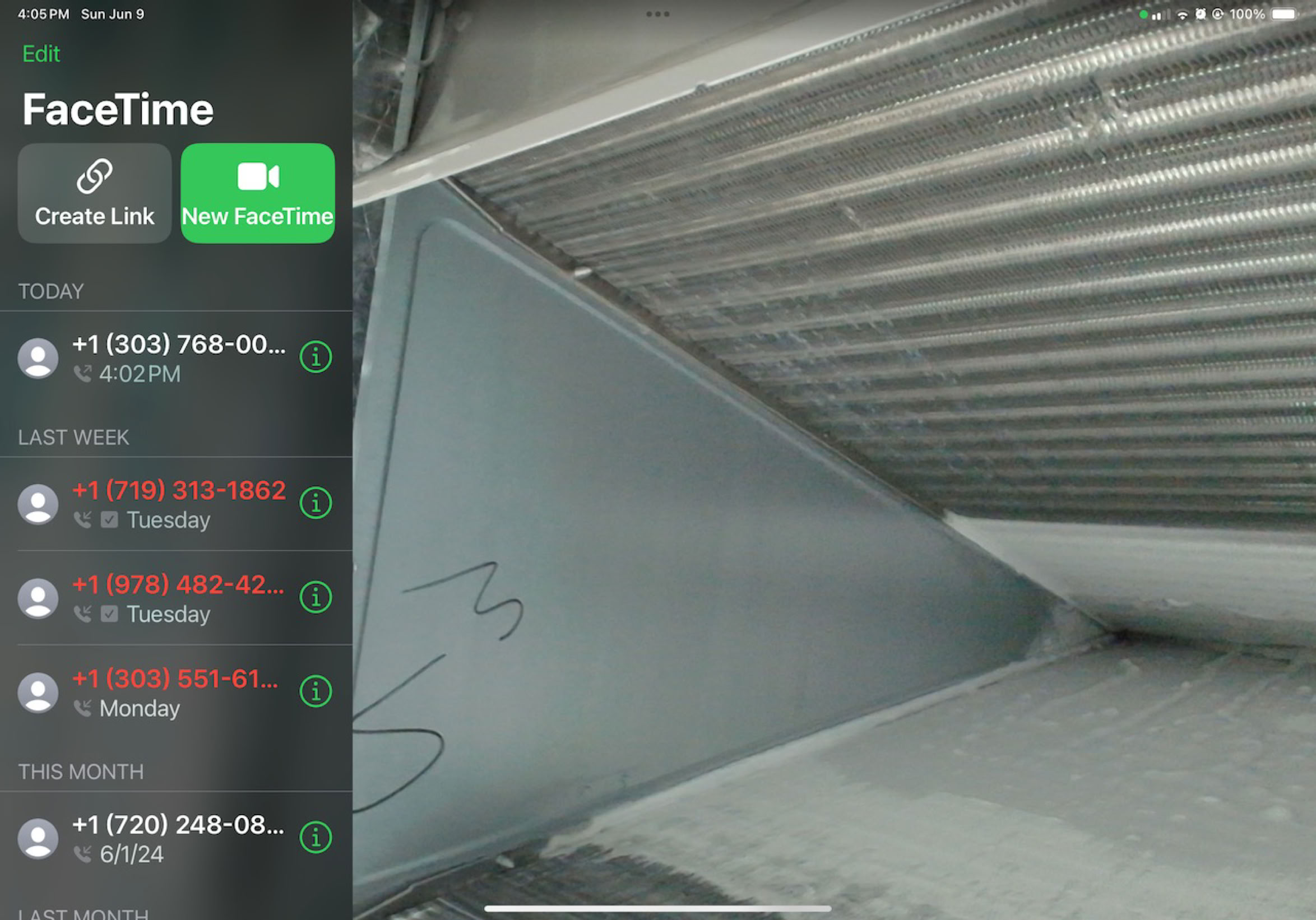
This is from June 9, 2024 (told you the Sandberg is slow!). Here’s the problem, the Rheem’s evaporator coil is iced up. Why all the Facetime stuff? This was shot with Logitech’s new 4K web cam (https://www.logitech.com/en-us/shop/p/4kprowebcam.960-001390) hooked up to Martin’s iPad. For some reason Apple’s camera app can’t deal with an external camera so Facetime had to be used. Actually seeing the evaporator coil isn’t easy. We attached the camera to a flexible selfie stick to maneuver it down to where it could see it. We also had to put a light in there becaused ducts are dark!
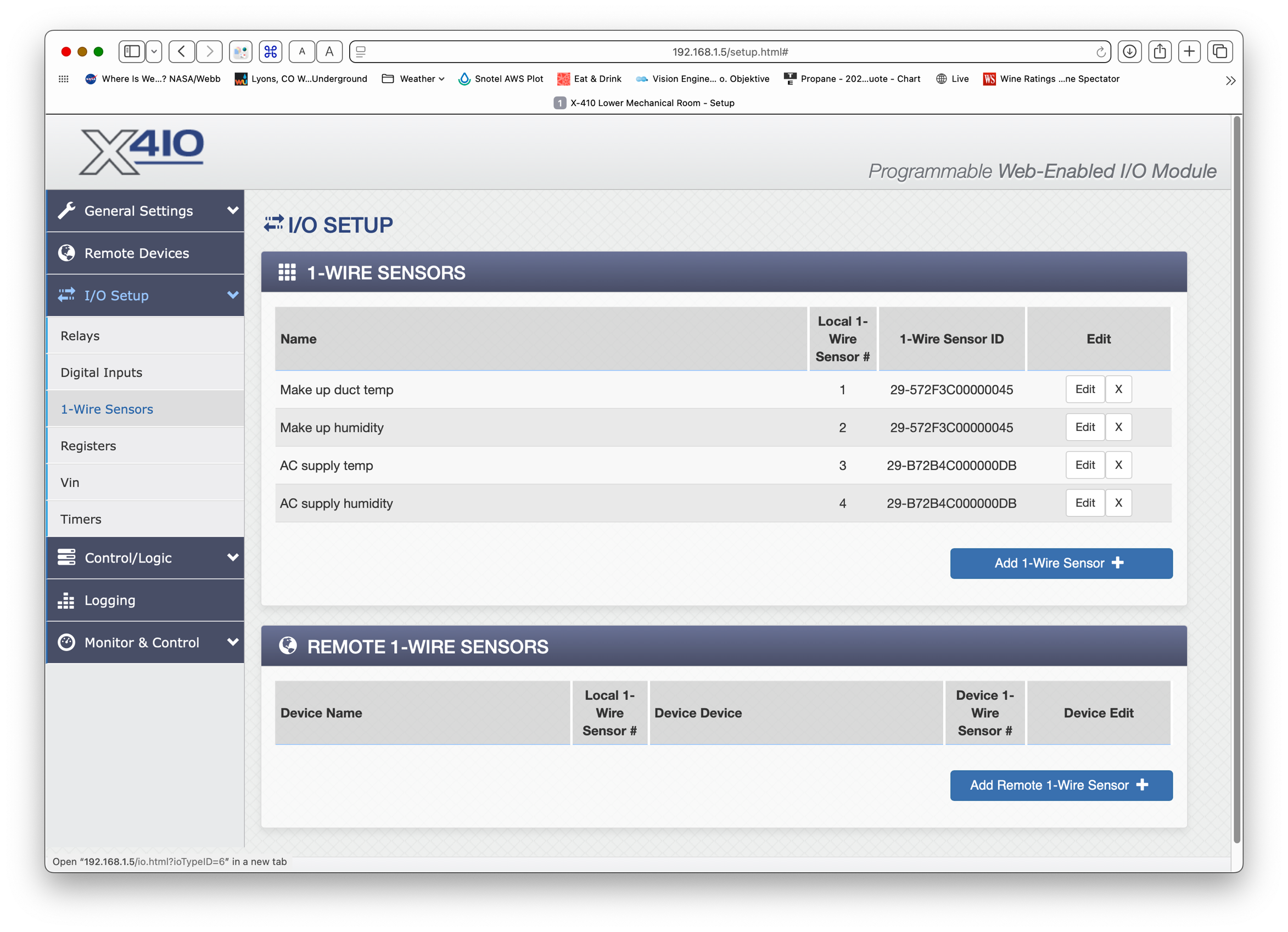
Above is step 1 - adding the new temp/humidity sensor to the lower mechanical room X-410. Even though it’s just one assembly, it shows up as two sensors.
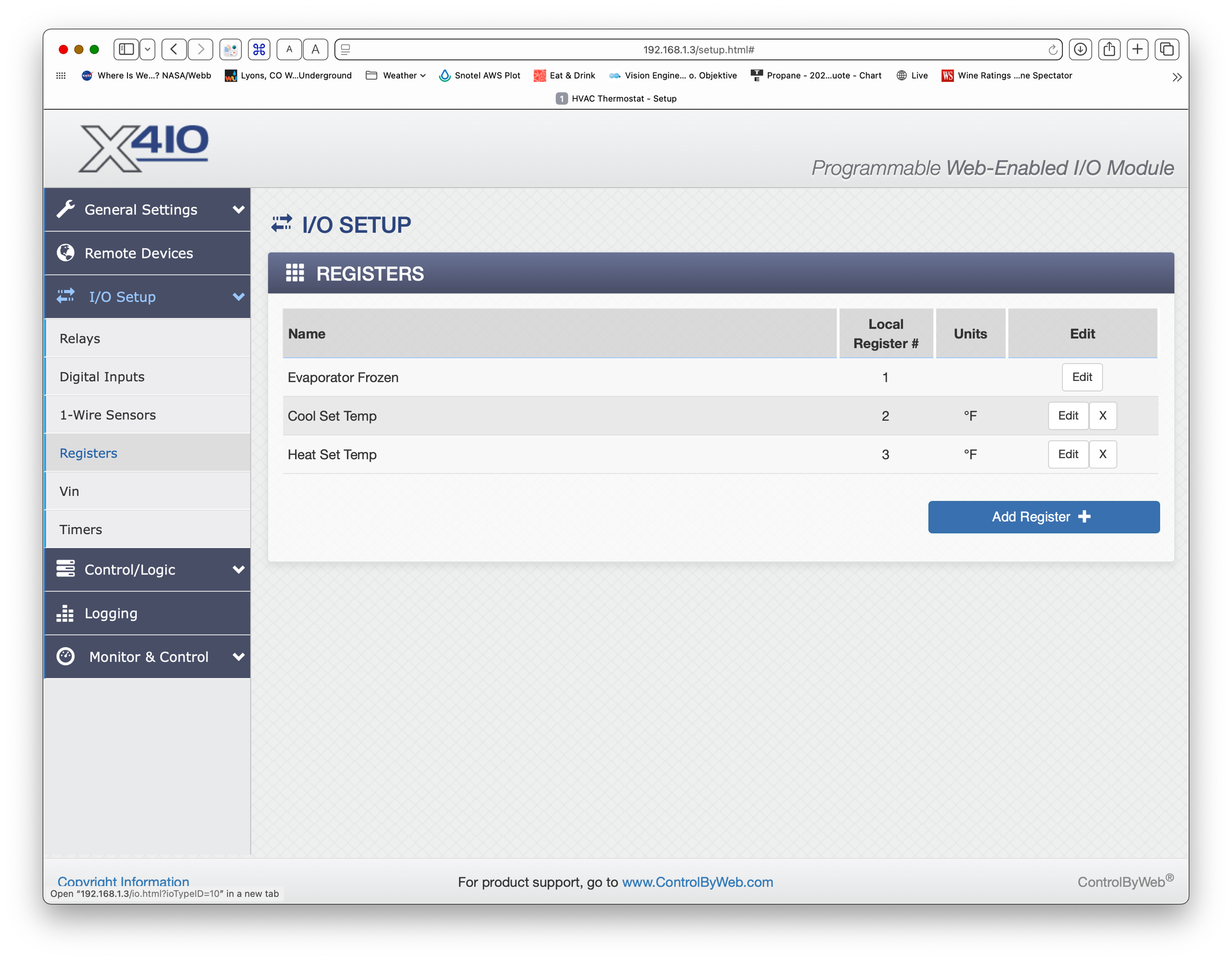
Step 2 - Creating the Evaporator Frozen register in the upstairs thermostat X-410
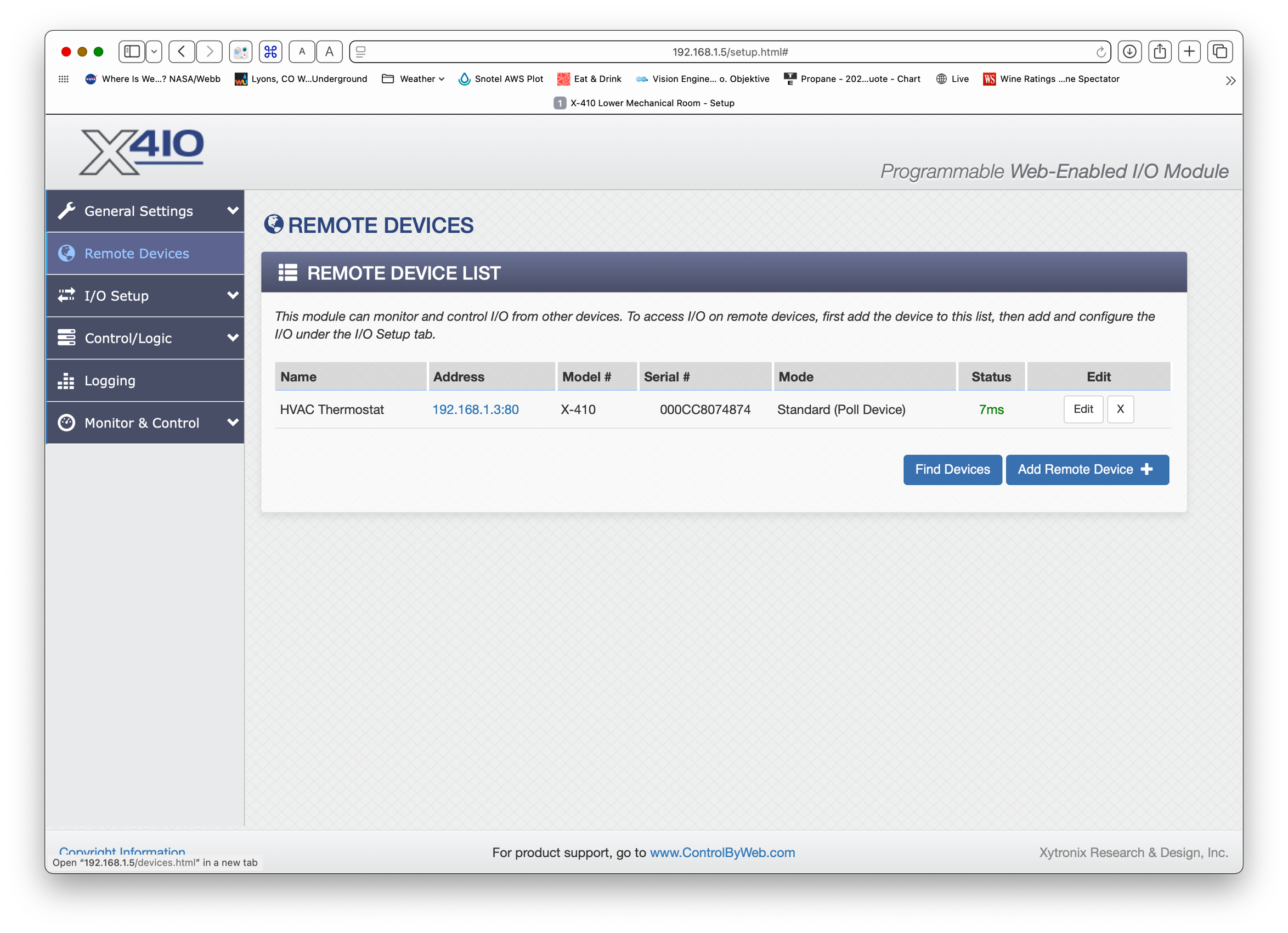
Here’s the magic! Martin asked the lower mechanical room X-410 to get a list of remote devices and it spotted the thermostat X-410.
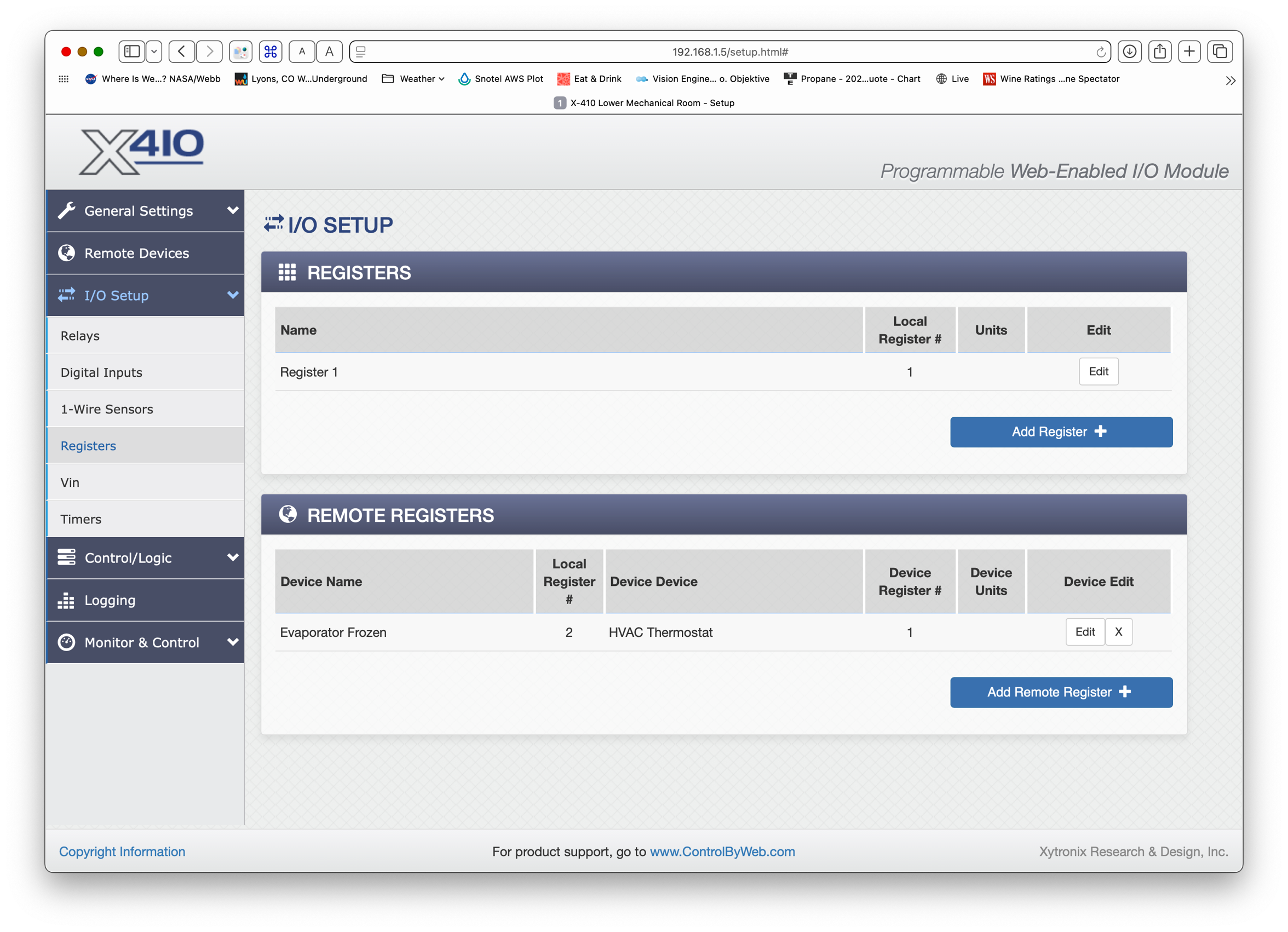
Back to the lower mechanical room X-410 and there’s the register in the thermostat X-410!
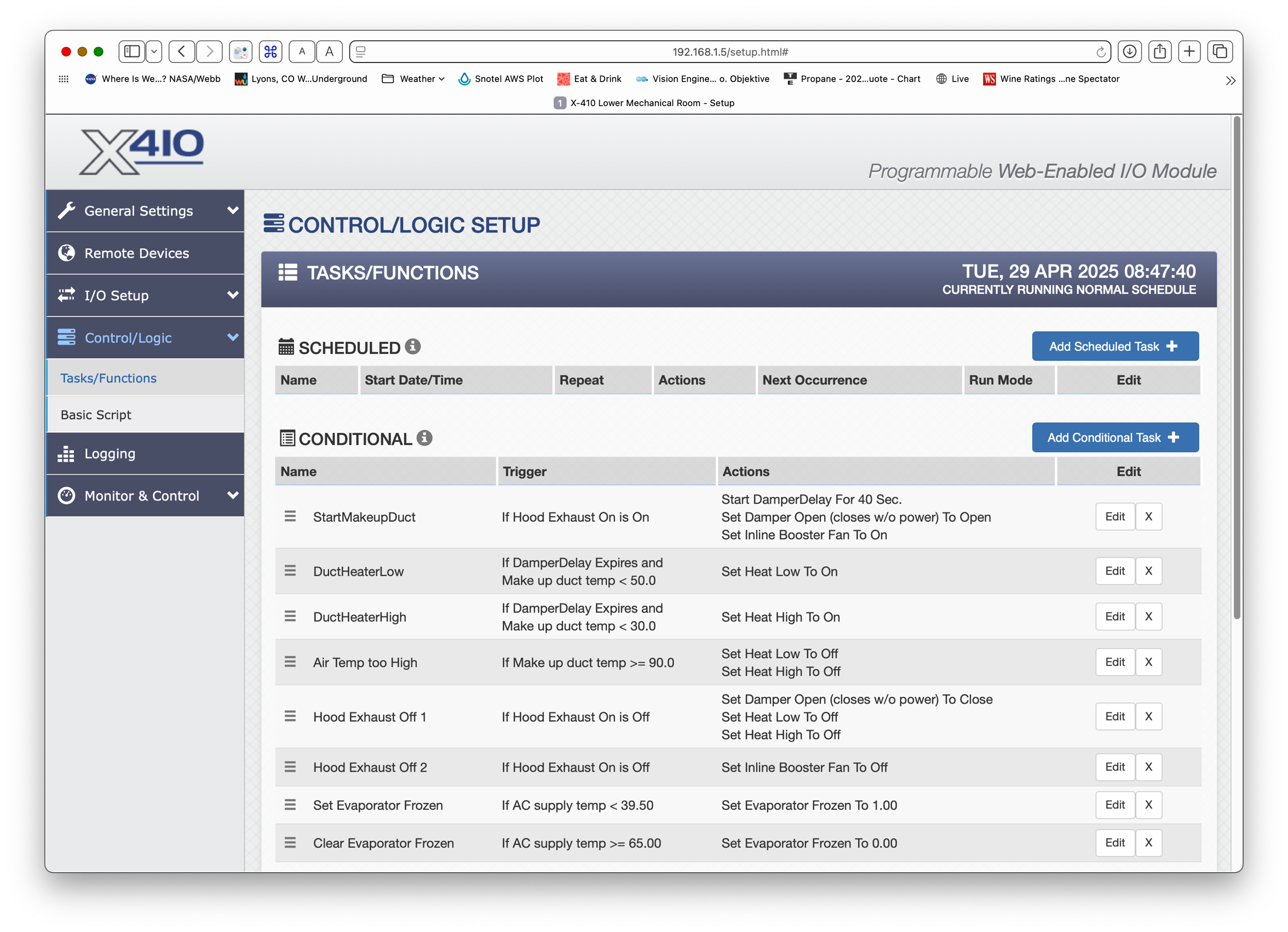
Now, lets drive it from the new sensor. As you can see from the bottom two entries, the remote register looks exactly like a local register. The X-410 handles everything! I don’t have to open a TCP port, compose a message, check for errors etc.! Yep, this really is a case of Arthur C. Clark’s Third Law - “Any sufficiently advanced technology is indistinguishable from magic.”

This is how the thermostat X-410 listens to the register. The “Evaporater Frozen” register actually is local on the thermostat X-410.
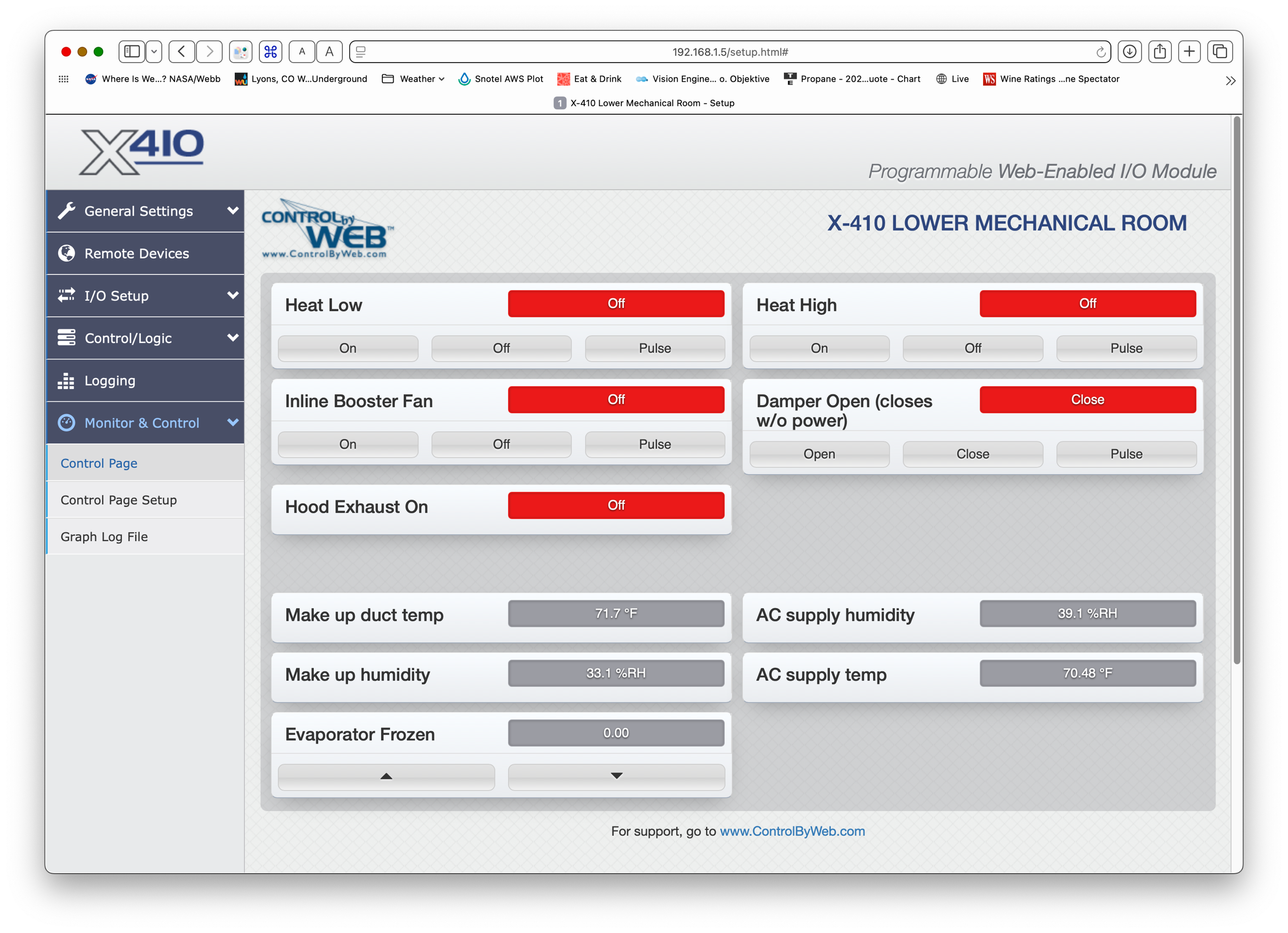
The “user interface” of the lower mechanical room X-410. Martin added increment/decrement buttons to the “Evaporator Frozen” register for testing.
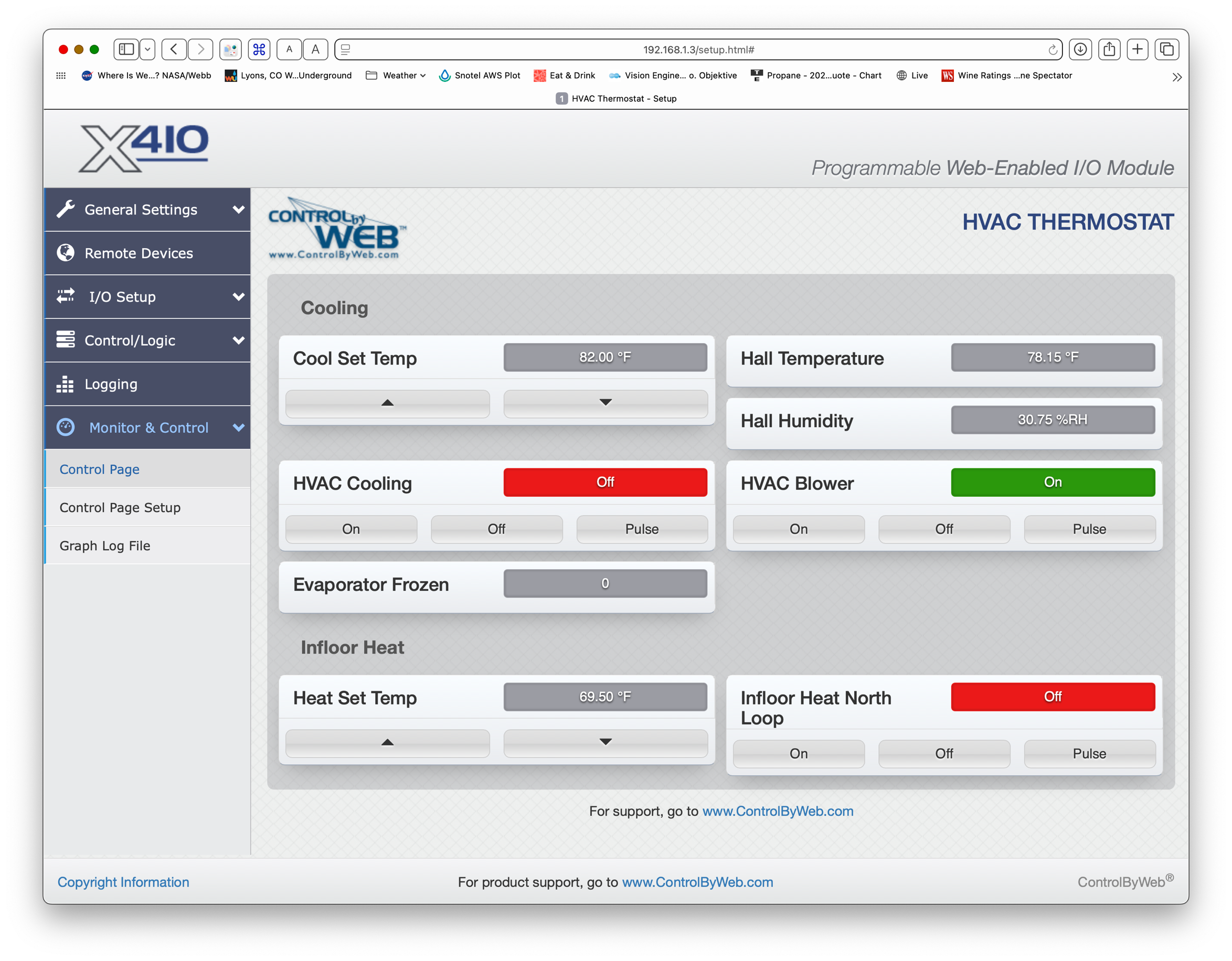
The “user interface” of the thermostat X-410. Martin wanted to see the “Evaporator Frozen” register. This X-410 also has to handle one of the infloor heating loops.
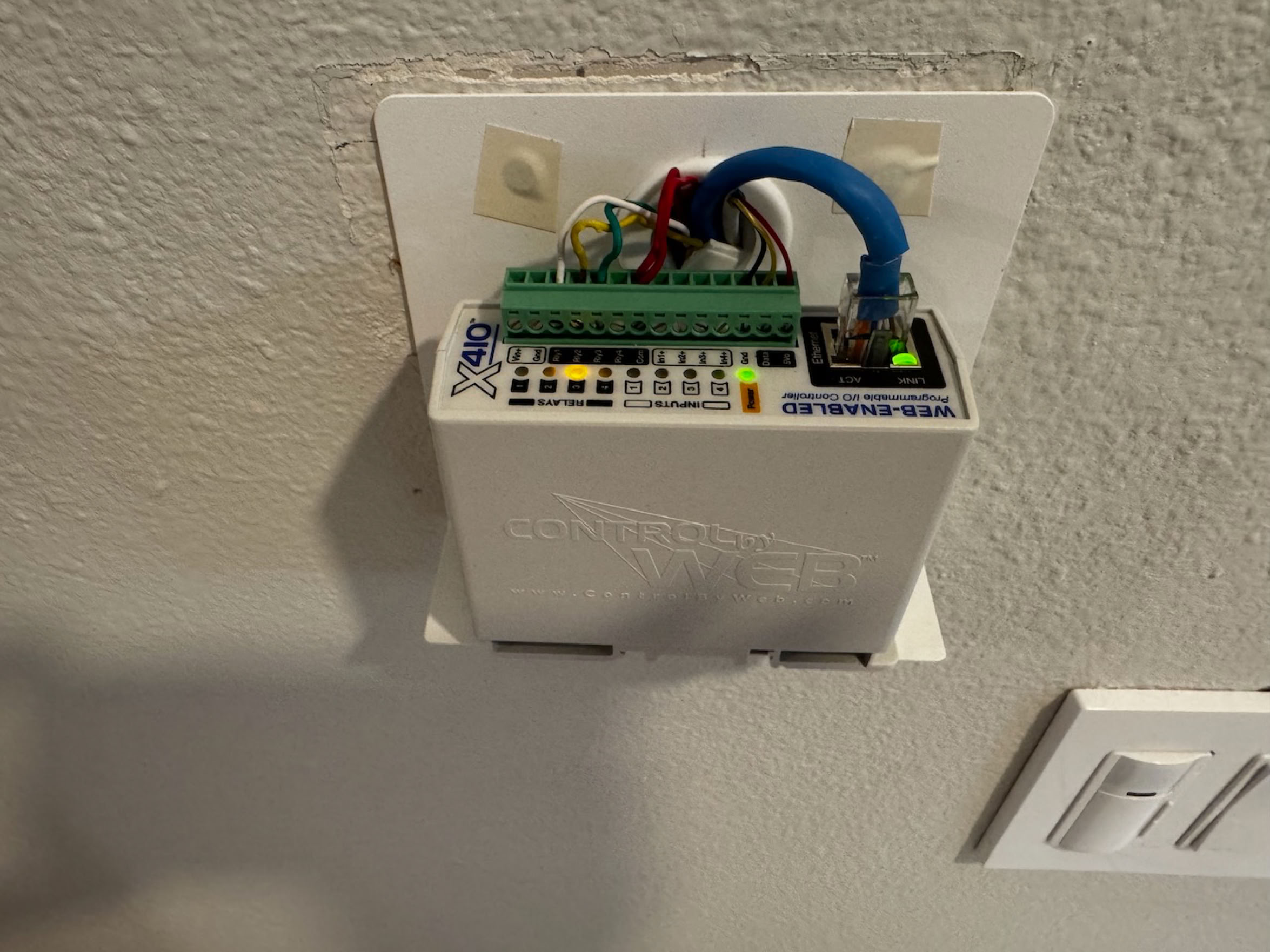
Here’s the thermostat X-410 installed. Not quite perfect, but at least a little neat.